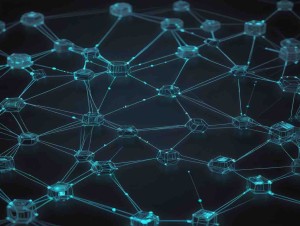Blockchain-based distributed ledger technology (DLT) facilitates the processing and recording of data and transactions in cryptographically secured and tamper-proof blocks. This technology can be used to introduce new levels of trust, transparency, security, and efficiency that were never before possible. It can also guarantee data privacy and data ownership and monetization for users.
Unfortunately, while many of the world’s economies are enjoying the benefits of fast, performant, and efficient crypto-based solutions and applications, billions of people around the world suffer from a more basic issue – a lack of internet connectivity.
How can these users be brought into the crypto fold so that they too can enjoy the benefits of blockchain-based efficiency and value creation? A few pioneering businesses such as 3air believe the answer lies in internet connectivity, and they are on a mission to bring that connectivity – and the resultant benefits of cryptocurrencies – to millions of unbanked and unconnected users in Africa.
The State of Internet Connectivity in Africa
The World Bank reports that almost three-quarters of Africa’s 1.3 billion population lack access to broadband internet. However, Africa is expected to hit an internet economy valuation of over $700 billion by 2050. This is a huge opportunity worth hundreds of billions of dollars in untapped economic potential. The challenge, however, is devising workable solutions that can overcome the many challenges that prevent the quick and cost-effective rollout of connectivity solutions on the continent.
Overcoming Challenges
A lack of infrastructure investment, the slow roll-out of projects and programs, and the overreliance on old, outdated technologies such as mobile towers and underground fiber optic cables are the three primary challenges to internet adoption (and therefore crypto adoption) in Africa.
What can be done?
A few companies such as 3air are using proprietary wireless point-to-multipoint technologies to deliver fast, secure, and reliable internet, digital TV, and IP telephony access using microwave radio signals. This technology can quickly provide connectivity services across densely populated cities within months – not years – that too at a cost of no more than $10 million to $15 million, which is a fraction of the cost of the fiber optic cable or broadband infrastructure needed to deliver similar coverage.
This technology can be rolled out in densely populated and high-traffic areas to ensure connectivity wherever a user may be and can serve up to 15,000 users per base station – almost 500 times as many users as a mobile tower – as well as speeds of up to 1 Gbps, which is up to 100 times faster than the average 4G connection. Also, since this technology operates at 600MHz, it can deliver up to 17 Gbps, or approximately 240 times the performance of mobile towers that operate on 20 MHz to 40 MHz.
With a coverage radius of 50km, only two to three base stations are required to deliver reliable internet over an entire city. The network’s transceivers – installed near end users – can then deliver connectivity thanks to the system’s compatibility with traditional Wi-Fi technology. This means the upfront investment and ongoing operating costs of the system would be much lower than the expenses associated with delivering coverage to an entire region using fiber optic cables or mobile towers.
Using other innovations such as bandwidth sharing and the creation of a mesh network, projects such as 3air hope to expand the geographic area that their networks can cover while ensuring lower costs and the optimum use of available bandwidth across all users within a given area. Also, since access point providers are given financial rewards for providing bandwidth sharing opportunities and for setting up and running connection nodes, these projects aim to deliver connectivity that is permissionless, seamless, and transparent.
Multiple projects such as 3air are also using the blockchain to incentivize users to join the platform’s mesh network and maintain the connection nodes needed to deliver internet connectivity across wide geographic areas. These incentives and the mesh network infrastructure can deliver widespread broadband connectivity and will help onboard millions of new users while remaining compliant with ISP terms and conditions and local laws, which helps prevent issues such as illegal activity and fraud of any kind.
What the Future Holds
For many people, high-speed internet access is a given, but for countless millions, it is a luxury – if it is accessible at all. Africa needs better internet connectivity – and fast. It helps power economic growth, closes the digital divide, and can lower costs, promote inclusion, improve access, and raise the quality of life.
With limited access to the internet, costly plans, inadequate infrastructure investment, and spotty and unreliable connections, connectivity players in Africa need to do better. Projects such as 3air hold promise, but only time will tell if the 3air blueprint brings about the much-needed change that future internet users expect.





